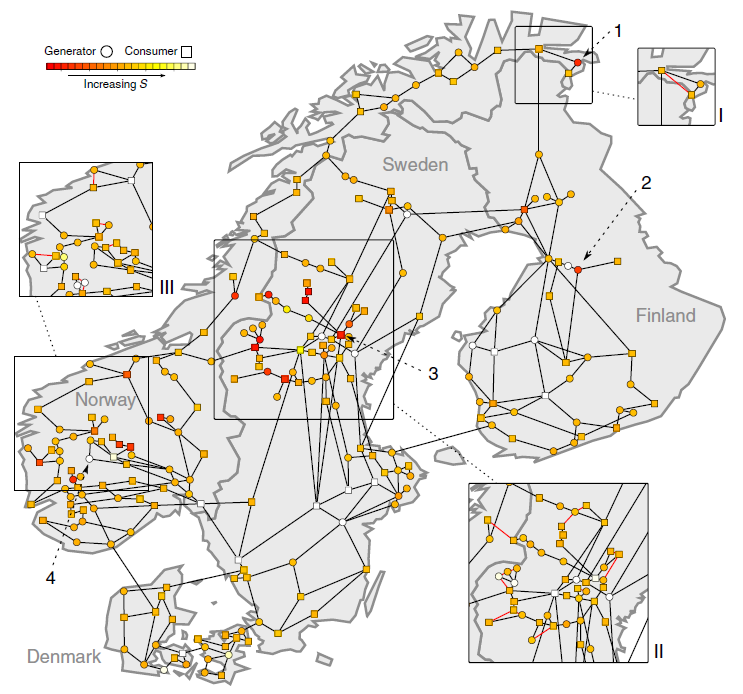Planning electrical grids in a steady environment is not overly difficult. A number of large power stations are connected to urban population centres, where much of the power is consumed. Typically, such power grids would look like meshes with interconnected distribution points that make sure that if one power station fails, others can compensate .
However, as electrical demand grows, the solution is that new power plants are built and linked to the net at various places, but often with only one connection to the network. These dead ends make the network very susceptible to blackouts, even if many of them are connected by two parallel power lines for redundancy.
In future, the use of renewable energy will pose even greater demands on such network architectures, because the distributed generation of power makes the power generation very dynamic. If the sun shines in certain parts of a country, or the wind blows strongly in one area, large amounts of power will need to be shifted between regions, and the power grids need to be capable of handling that.
There have been a number of studies on this issues, for example on how to balance loads locally. Peter Menck, Hans Joachim Schellnhuber and colleagues from the Potsdam Institute for Climate Impact Research in Germany have looked at the bigger picture, and use network theory to study the robustness of actual power grids, with all their dead ends and dead “trees” (where multiple dead ends are connected to a single node in the mesh).

Power grid in Scandinavia. The red and blue dots denote notes in the network, with red dots being critical junctions for stability, often associated with dead ends. The zoom-out images show how a few additional transmission lines that avoid dead ends could stabilize the grid. (c) Reprinted by permission from Macmillan Publishers Ltd. Nature Communications 5, 3969 (2014) doi:10.1038/ncomms4969.
As an example, the researchers studied the power networks in Scandinavia (see image) and analysed the distribution of nodes, and the effects that the failure of power generators has on the stability of the grid. In many instances, dead ends, or nodes connected to such dead ends, are susceptible to breakdown, as could perhaps be predicted.
It is more interesting how such networks could be improved. And the conclusion is that it would not take that much effort. In many instances, it only requires dead ends to be connected to a second node. Indeed, a conclusion from the study is that robust networks need to avoid such dead ends entirely.
With the increasing use of renewable energy sources, such design principles will become even more relevant for the design of grids, and the kind of network theory used here certainly is a powerful mathematical approach to bring to the design of modern power grids.
Note: While I made every attempt to present these results objectively, please be aware that this paper is published in the journal that I work for. For more details see the disclaimer.
Reference:
Menck, P., Heitzig, J., Kurths, J., & Joachim Schellnhuber, H. (2014). How dead ends undermine power grid stability Nature Communications, 5 DOI: 10.1038/ncomms4969


June 17, 2014
Clean Energy, Engineering